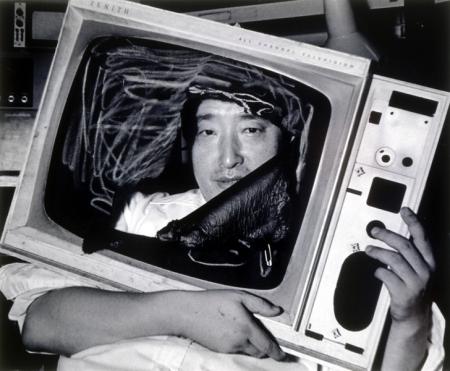Serendip is an independent site partnering with faculty at multiple colleges and universities around the world. Happy exploring!
Frindle's blog

Rewrite: NW
This past weekend, I used the lens of existentialism (in particular, Sartre's view) to observe the relationship between Leah and Keisha, focusing mostly on the third section of the book.
After reading Mark's thoughts, I've decided that this weekend, I'd like to refocus the lens to contrast Satre with Kierkegaard (who is, after all, mentioned in NW) and observe the separation of Leah and Keisha (that is, where they are in the first and fourth sections of the book, both going through seperate crisis).
Because of this, the essay will focus more on the individual characters: Who Leah is when she goes through her pregnanacy scare, who Keisha/Natalie is when she is in her pregnancy v. who she is with Nathan v. who she is when she wants to turn Nathan in, and how she reconciles all of these different "selves" into one person.

The Other: Friendship in Existentialism
Co-authored by Muni
Zadie Smith begins and ends her novel, NW, with each half of a friendship. The novel opens with Leah, grown up and on her own, listening to a radio that at some point mentions what it is to define oneself. The novel closes with Keisha (now Natalie), going through an existential crisis. A large portion of the middle of the novel is devoted to the events that lead to the beginning and the end of the novel, toward the adulthood of these characters. In this way, the book appears to almost grow from the inside out, which parallels the theme of existentialism throughout the novel. Existentialism is the idea that one is defined through one’s own actions; what one chooses to do internally is observed by an “Other,” who then is able to define the other. In this way, one cannot be defined without an Other (in this case, a close friend). When one loses their Other, they also lose a large part of their identity and fall into despair, which leads to an existential crisis.

NW Leah v. Keisha/Natalie
I'm interested in the difference between Leah and Natalie. Leah has spent her whole life going against what was expected of her: she did next to nothing with her college degree, is living in a home worse than the one she grew up in, is deciding not to have children. Natalie, on the other hand, has spent her life doing only what was expected of her: went to college, got an excellent job, lives in a nice house, has a family. Leah, however, appears to be more happy with where she is than Natalie. Why is this? This is made more interesting when we take into account the fact that they grew up together and were best friends...many of the things they did, they did together.

Mid Semester Evaluation
In many ways, this class is exactly what I’ve been hoping for since my days at an alternative elementary/middle school. At that school, we practiced being critical thinkers. To do this, we had a comfortable environment: we called teachers by their first names, had a lot of classroom discussions, and sat in circles so we could see each other’s faces. I’ve found that this class, Play in the City, is also set up to be a comfortable environment. Unfortunately, I still have lingering thoughts from high school running through my head, usually along the lines of Is this relevant? Will people care about what I have to say? and, of course, the ever present Is this a stupid question/remark/thought? I’ve been getting over that, though. I’ve become more comfortable talking in class, saying what I believe. Everyone in this class listens to what other people have to say, and there is usually a way to bring the comment into the discussion and build upon it.

Spoken Word Poetry
Hi guys! In class today I mentioned that NW reminded me of Spoken Word Poetry. If yu don't know what that is, here's a link with 2 examples by Sarah Kay. They're each a little over 3 minutes, and they're pretty fabulous.
http://www.ted.com/talks/sarah_kay_if_i_should_have_a_daughter.html

Critical Play: The Necessity for Separation of Perspective
When I visited Philly this weekend, I didn’t have much of a plan. I knew that I wanted to visit Elfreth’s Alley, but beyond that I decided to be spontaneous, let serendipity guide me. I went to Philly with Marcia, and we spent a little bit of time walking down the alley, admiring the bright colors on the shutters and doors, the flower boxes, the cobblestone street.
Soon, though, we were tired of admiring. We had the same itch that many do: we didn’t want to just look at something, we wanted to do something. So we started walking, heading towards the more well known area of Old City. On the way there Marcia asked me if I still wanted to go to the Constitution Center. Even though I had previously decided not to go, I thought that we may as well, as it sounded pretty fun when I looked at it online.

Fun Fun Fun
1. Oh look Congress is shutting down the government...what else is new? Let's see what's affected in Philly...
2. Went here and found a nice little list of 12 things that will be closed. But also a list of 14 things that are open.
3. Clicked on this and noticed that you got to dress up in Supreme Court Robes...sign me up!
4. Noticed that it cost $20...cross me off the list! But there was also information about the neighborhood it was located in.
5. Hey look Old City! What's there? This.
And you can get there via train and subway. An exciting adventure indeed.


Nam June Paik
 Nam June Paik used technology as an art form, and has often been called the godfather/grandfather/George Washington of video art.
Nam June Paik used technology as an art form, and has often been called the godfather/grandfather/George Washington of video art.
One of his exhibits was made of 52 TVs that were each covered by an aquarium filled with water and fish that swam around in front of what was appearing on the TVs. Another piece he did was "TV Buddha," in which a sculpture of a seated Bhudda who watched humself on a closed circuit television.
For more infomation, go to: http://articles.latimes.com/2006/jan/31/local/me-paik31

Choose Your Own Adventure
Before reading the excerpt from Flanagan’s book, I used to think of my adventures into Philadelphia as an unrestricted adventure. I could go wherever I wanted, do whatever I wanted. After reading her book, however, I’ve begun to think of my adventures as more limited. Flanagan quotes Costikyan in her book discussing the differences between stories and games. “Stories,” writes Costikyan “are inherently liner. However much characters may agonize over the decisions they make, they make them the same way every time we reread the story, and the outcome is always the same…Games are inherently non-linear. They depend on decision-making, [with] real, plausible alternatives. It must be entirely reasonable for a player to make a decision one way in one game, and a different way in the next.”
But what about the Choose Your Own Adventure books? The series of books that allow one to assume the position of the main character, and choose one of several “real, plausible outcomes” multiple times throughout the book. The Choose Your Own Adventure books are in this way both stories and games. On one hand, it is a story in that there are not an unlimited number of ways for the story to end, no matter how many times one redoes the story or chooses a different path. On the other hand, it is a game in that the path that one’s character takes can be different each time, and the outcome does not not need to be the same.

A Mosaic Without Sight
When I was reading the mosaic for Thursday, I noticed that it was focused almost entirely on sight. I therefore decided that I was going to make a mosaic out of everything but sight: I only wrote down things I heard, smelled, or touched on the train ride into Philly, in Philly, and then out of Philly.


